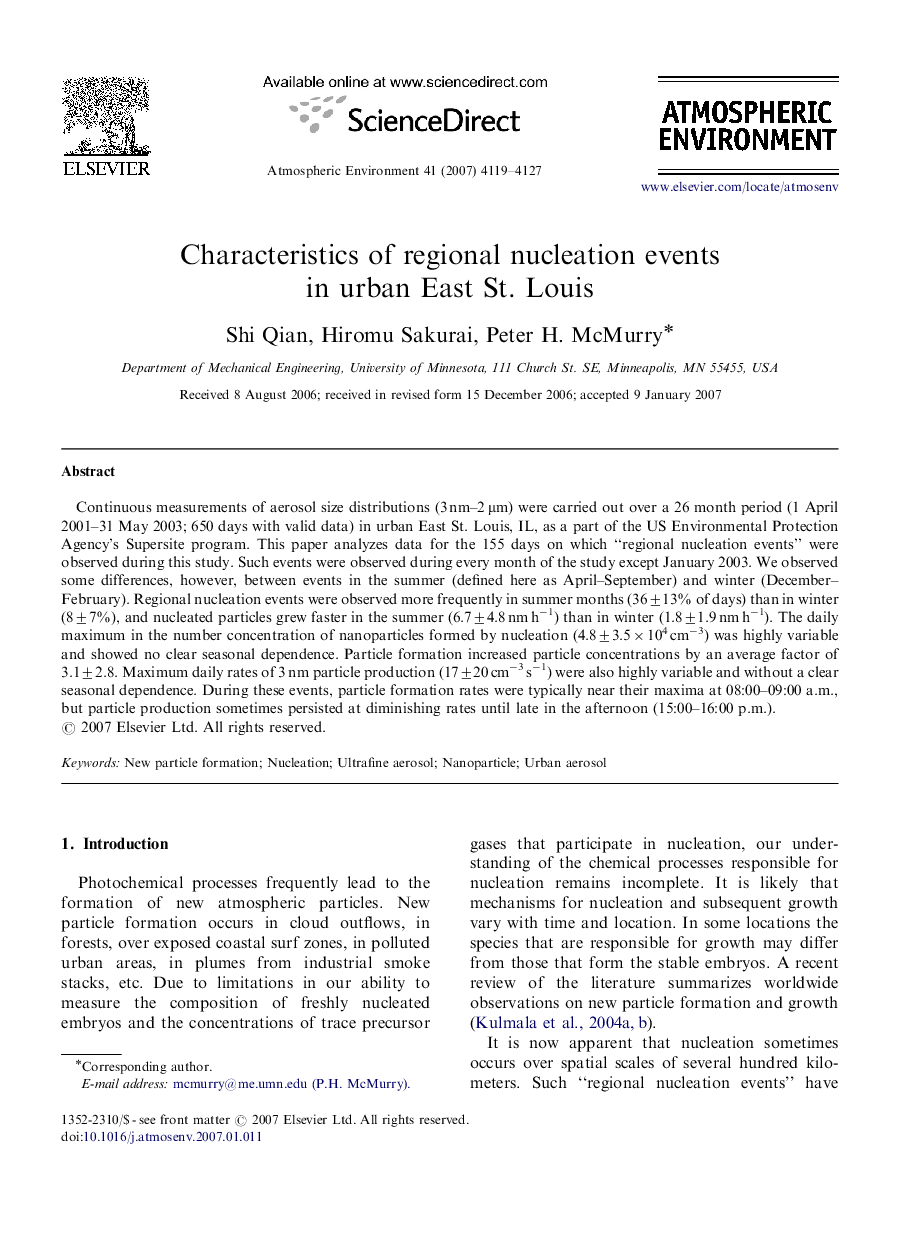| Article ID | Journal | Published Year | Pages | File Type |
|---|---|---|---|---|
| 4443748 | Atmospheric Environment | 2007 | 9 Pages |
Continuous measurements of aerosol size distributions (3 nm–2 μm) were carried out over a 26 month period (1 April 2001–31 May 2003; 650 days with valid data) in urban East St. Louis, IL, as a part of the US Environmental Protection Agency's Supersite program. This paper analyzes data for the 155 days on which “regional nucleation events” were observed during this study. Such events were observed during every month of the study except January 2003. We observed some differences, however, between events in the summer (defined here as April–September) and winter (December–February). Regional nucleation events were observed more frequently in summer months (36±13% of days) than in winter (8±7%), and nucleated particles grew faster in the summer (6.7±4.8 nm h−1) than in winter (1.8±1.9 nm h−1). The daily maximum in the number concentration of nanoparticles formed by nucleation (4.8±3.5×104 cm−3) was highly variable and showed no clear seasonal dependence. Particle formation increased particle concentrations by an average factor of 3.1±2.8. Maximum daily rates of 3 nm particle production (17±20 cm−3 s−1) were also highly variable and without a clear seasonal dependence. During these events, particle formation rates were typically near their maxima at 08:00–09:00 a.m., but particle production sometimes persisted at diminishing rates until late in the afternoon (15:00–16:00 p.m.).
